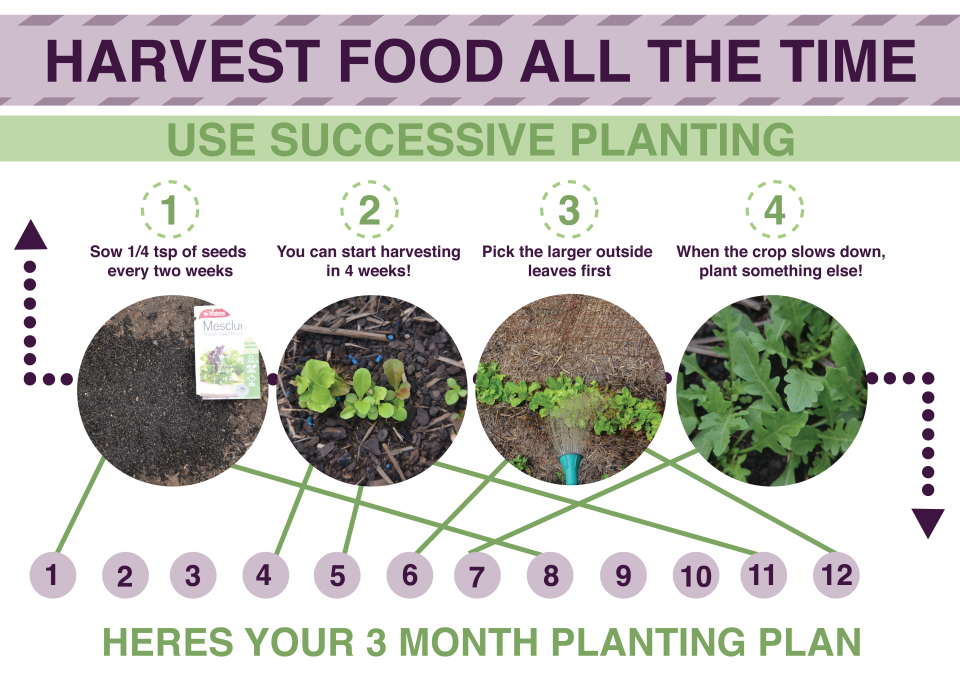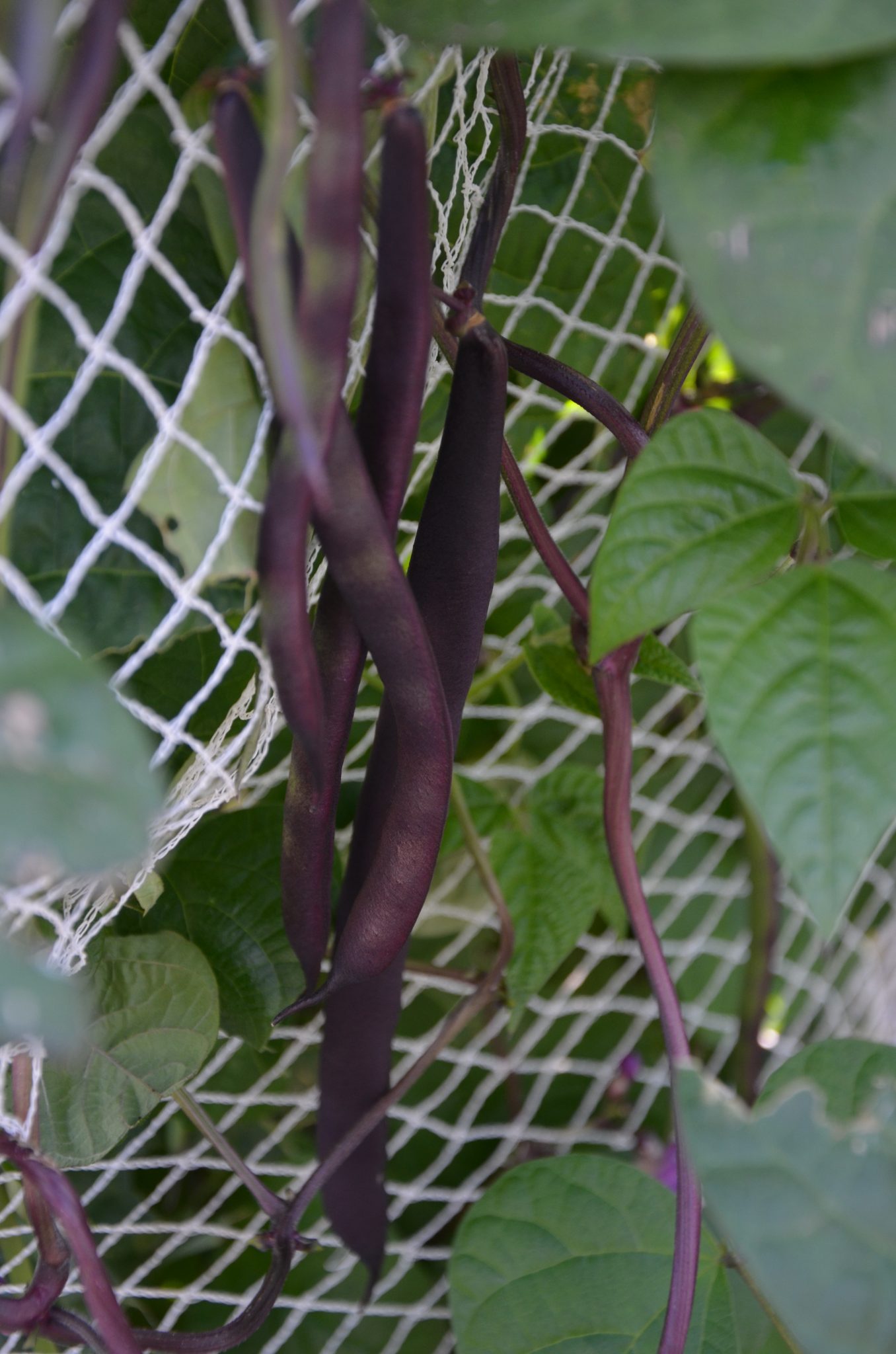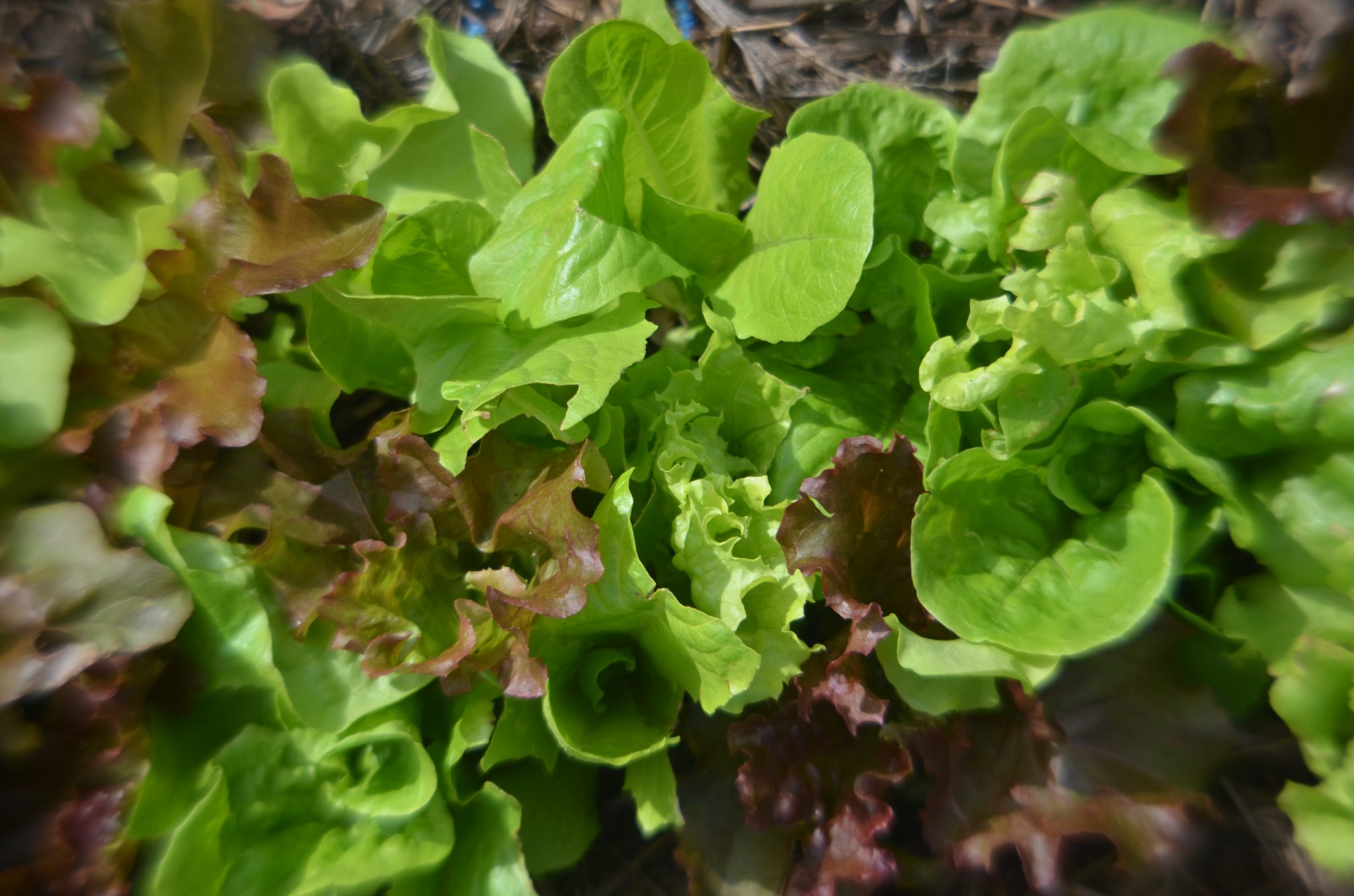
One of the most important things that backyard producers need to learn is how to have a continuous production of food. The feast or famine production of many backyards can be both frustrating and demoralising. Not to mention a waste of energy, mostly your labour, and money.
I have had the experience of planting a whole packet of dwarf beans and then 3 months later picking a bucket of beans a day and the family groaning at the sight of yet another bean dish.
This is not what will keep us motivated to continue to plant and grow our backyard produce.
With a little bit of knowledge and planning, backyard producers can easily develop a production system that allow for the consistent and continual production of healthy fresh and flavoursome food.
The key to continual production is understanding and practicing Successive planting.
Successive planting is a process where you plant small amounts of various crops at regular intervals to ensure a continuous supply of produce.
As one crop is finishing the next crop will be coming into full harvest.
So where to begin
Firstly as with all annual vegetable plantings it is still about planting the right crops in the right season, knowing what temperate seeds germinate at and when they are going to grow their best. It is also good to know how many weeks from planting to harvest and the length of time a crop will produce. All these things will help you determine the interval time between your plantings.
You may also have the opportunity, with some crops to plant different varieties, with some germinating and growing earlier in the season or maturing in less time. Both will extend your harvest.
The final thing to consider is making sure you have room for subsequent planting.
It is tempting to keep planting until all available space is taken up and then just maintain and harvest, but this will not give you a continuous harvest, back to the feast or famine situation.
So for each crop you wish to plant successively leave enough space to do a number of planting throughout the season.
To avoid weed contamination in the bear ground cover with straw or other mulch. Or once a crop has come to the end of its most productive stage pull them out and replacing straight away with another crop (remembering the principles of crop rotation) this way you are efficiently utilising all productive areas to their full potential.
It can be done for most crops that we would normally grow in our productive gardens. The exemption would be crops like onions and garlic which are planted and harvested at specific times.
So an example of a successive planting of a warm season crop such as beans would go like this:
Beans germinate once the soil has warmed up slightly, say early to mid- October and will not crop well once you start getting cold autumn nights say mid-April, giving us nearly six months where you can germinate, grow and harvest beans. The key is to plant small amounts often- beans take about 12 weeks to crop and then crop for about two to three weeks so you need to plant every 2 to 3 weeks to get a continuous harvest.
The next concept to understand is amount, about 12 dwarf plants will give you 2 to 3 feeds (enough as a side dish for 3 to 4 adults) of beans a week. So to allow for non-germination and thinning of weak plants, if you plant 16 bean seeds every 2 weeks you will have a continuous manageable amount of crop for six months of the year.

Climbing beans
Some other examples:
Stagger corn by planting you next crop when the previous one is about 5 to 6 cms high
Sow some mixed lettuce and rocket every second week to have a continuous supple of Musculm mix for salads
Between October and April sow carrots every month to ensure a continuous supply all year.
All this information can help you develop a successive planting guide.
Or if this all seems too hard, just try to plant a variety of crops every week. It can be as simple as calling into your local nursery of your way home from work Friday afternoon, buying 2 or 3 punnets of whatever they have is stock, that you would like to eat and planting them out over the weekend.


Here is a table of common staples that I grow successively.
The temperatures are only a guide so experiment.
Remember if your soil temperature is not warm enough to germinate your seeds in situ you can buy seedlings and plant them or start seedlings indoors. They may grow a bit slower until the soil warms up but you will still be getting a head start on the waiting until the soil is warm enough.
| Warm season crops | |||||
| crop | Germination temperature | Approximate weeks to harvest | Interval between plantings | Number of planting per season | Number of seeds /seedlings to plants at each planting based on my tastes and for a family of 4 |
| Beans dwarf and climbing | 15-26 c | 12-14 | 3 | 6-8 | 12-16 seeds |
| Beetroot | 10-29 c | 8-14 can be used at various sizes | 3 | 10 | 20 |
| capsicum | 29 | 10-12 | 4 | 4 | 3-4 |
| carrot | 26 | 10-12 | 4 | 6-7 | ¼ packet seed |
| Corn, Sweet | 35 | 10-14 | 3 | 4 | 8-10 |
| coriander | 35-70 | 4 | 2 | 20 | 20 |
| cucumber | 18-37 | 10 | 4 | 4 | 3 |
| Eggplant | 29 | 10-14 | 4 | 4 | 3 |
| Lettuce musclum | 2-21 | 6-8 | 2 | 20 | ¼ packet seed or scatter seed along 50 cm row and thin |
| Rocket | 2-21 | 4 | 2 | 20 | ¼ packet seed or scatter seed along 50 cm row and thin |
| tomato | 15-26 | 10-12 | 4 | 5 | 2-4 |
| Cool season crops | |||||
| Broccoli cauliflower | 10-25 | 10-12 | 2 | 10 | 4 |
| leeks | 10-20 | 10- 12 | 2 | 2 | 40 use at various sizes |
| Peas, snow, sugar snap or bush | 10-20 | 10-12 | 2 | 10-12 | 12 |
| potato | Grow best at temperatures b/w 15 to 25 c | 12-14 | 4 | 6
3 in spring 3 in autumn |
10 sprouted tubers |
| Spring onion | 15-23 | 10-12 | 4 | 10 | 20 |
| spinach | 10-20 | 6-12 | 2 | 10 | 10 |